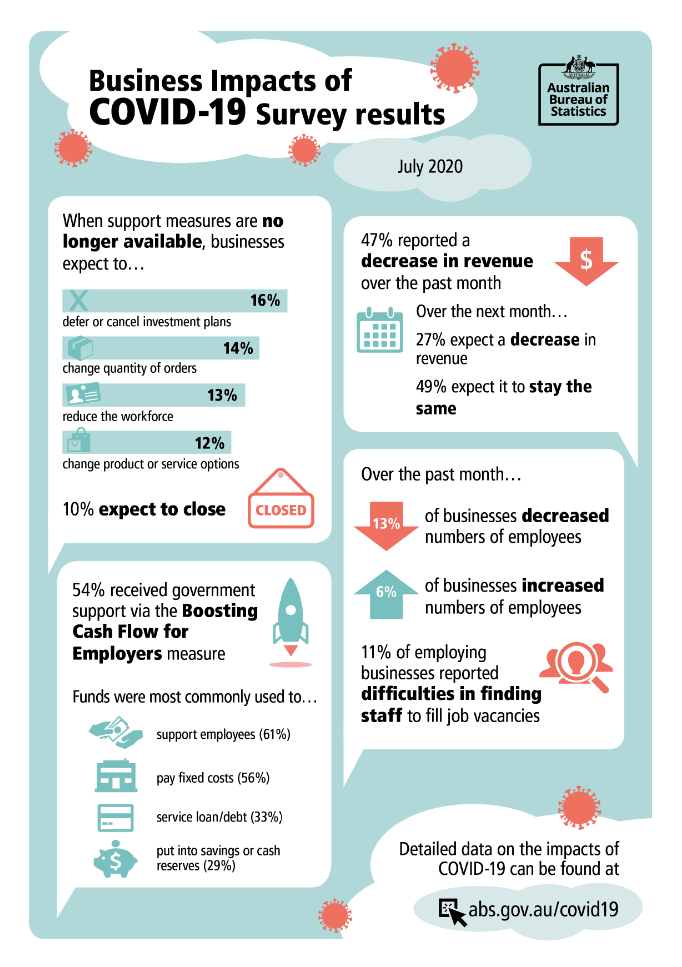ABS COVID Business Impacts Research Paints Grim Picture for Australian Firms
(3 August 2020 – Australia) According to the latest Australian Bureau of Statistics (ABS) research, 42 percent of Australian enterprises are relying on support measures, deferring loan repayments or renegotiating rental or lease arrangements to manage the devastating impacts of the COVID-19 pandemic.
The Victorian state government has declared a state of disaster after the coronavirus outbreak showed no signs of abating three weeks after Melbourne’s five million residents were ordered to stay home except for work, medical care, provisions or exercise. The lockdown will now cover all of Australia’s second-most populous state, and residents of the city will be under curfew between 8pm and 5am.
The latest ABS survey on Business Impacts of COVID-19 revealed that more than half of medium businesses (53 percent) are accessing support measures such as wage subsidies, compared to 42 percent of small businesses and 38 percent of large businesses. A small business is one with 0 - 19 employees, a medium business has 20 - 199 employees and a large business more than 200 employees.
Business impacts of COVID-19 include revenue, operating expenses and employment (past month and next month), support measures used by businesses and expected actions when they are no longer available and workforce difficulties experienced by employing enterprises. Additional ABS programs are being published to understand the economic impact of COVID-19 and can be found on a dedicated page on the ABS website.
East & Partners Anytime Question platform will investigate this month what is the number one piece of unprompted advice businesses have received from their bank to navigate the COVID-19 crisis.
When support measures are no longer available, businesses expect to:
Defer or cancel investment plans (16 percent), change quantity of orders (14 percent), reduce the workforce (13 percent) and change product or service options (12 percent)
10 percent of businesses expect to close.
54 percent of businesses received government support via the Boosting Cash Flow for Employers measure
Funds were most commonly used to:
Support employees (61 percent), pay fixed costs (56 percent), service debt (33 percent), or put into savings or cash reserves (29 percent)
47 percent reported a decrease in revenue over the past month
Over the next month:
27 percent expect a decrease in revenue
49 percent expect it to stay the same
Over the past month:
13 percent of businesses decreased numbers of employees
Six percent of businesses increased numbers of employees
11 percent of employing businesses reported difficulties in finding staff to fill job vacancies
“Businesses were asked how they expect to respond when these measures are no longer available. The most likely actions reported were to defer or cancel investment plans, change quantity of orders or reduce the size of their workforce. One in ten businesses reported that if support measures were no longer available, they would expect to close the business” stated ABS Director of Technology, Innovation and Business Characteristics Statistics, Sue-Ellen Luke.






 Subscribe
Subscribe